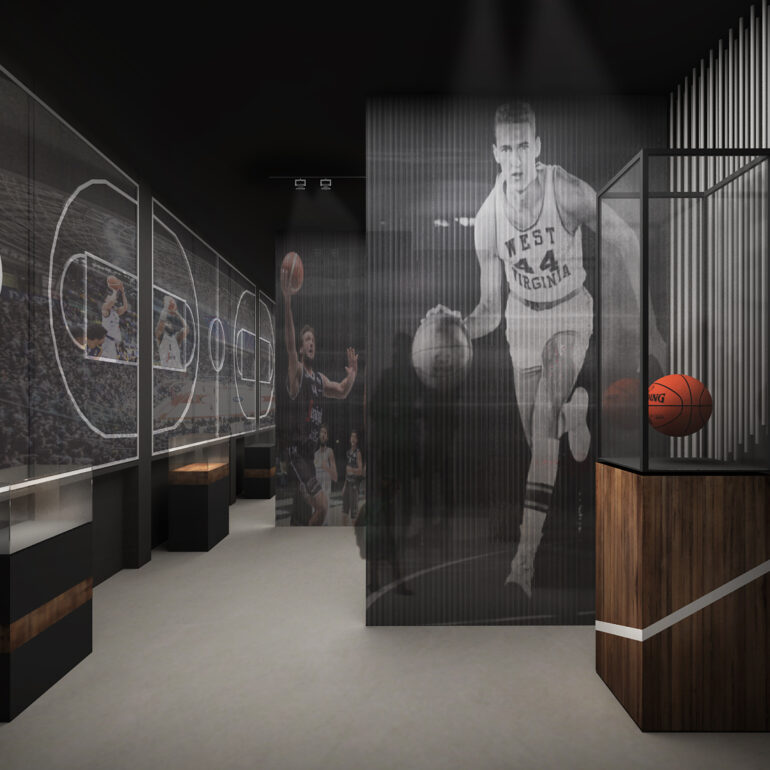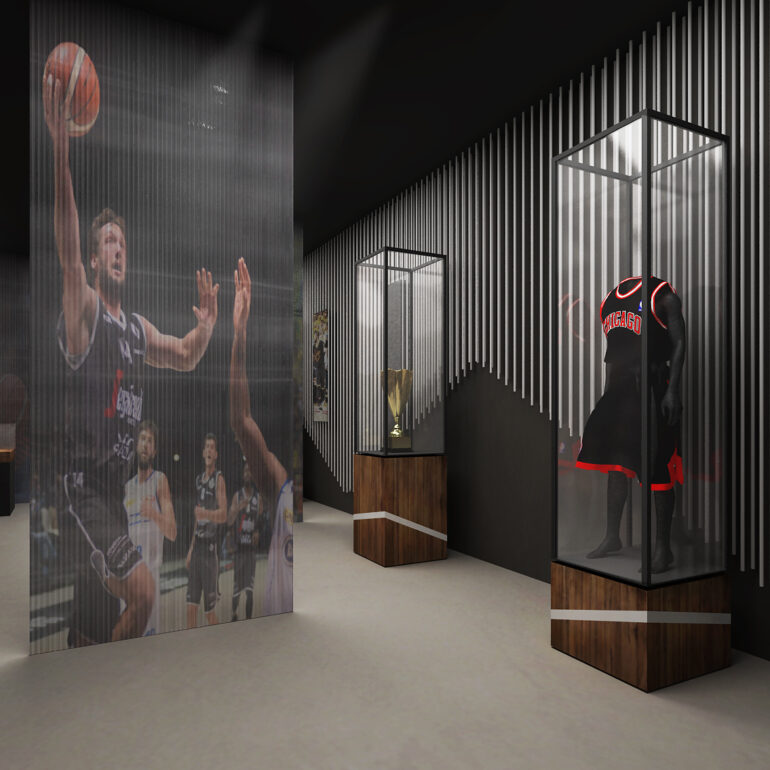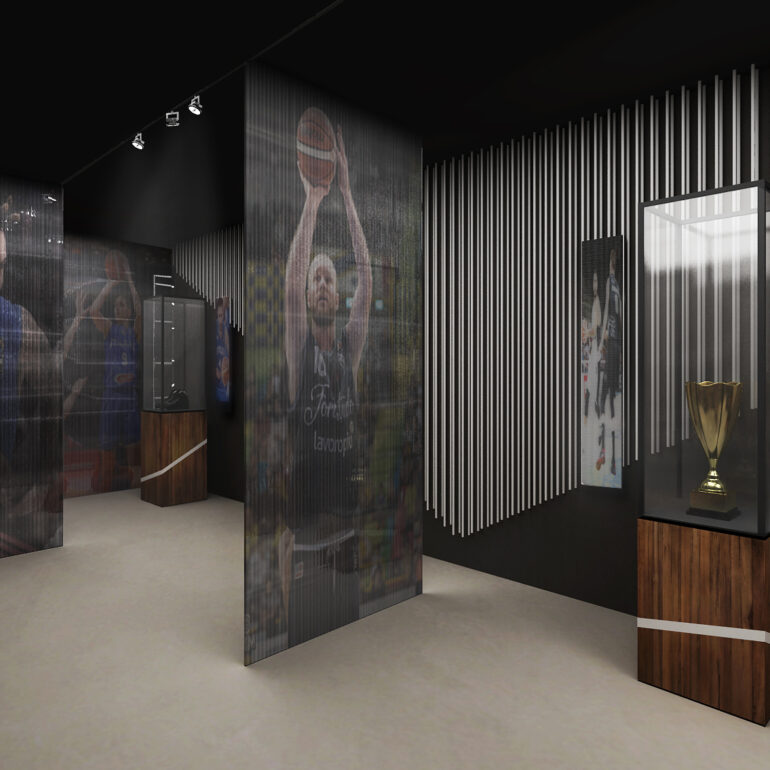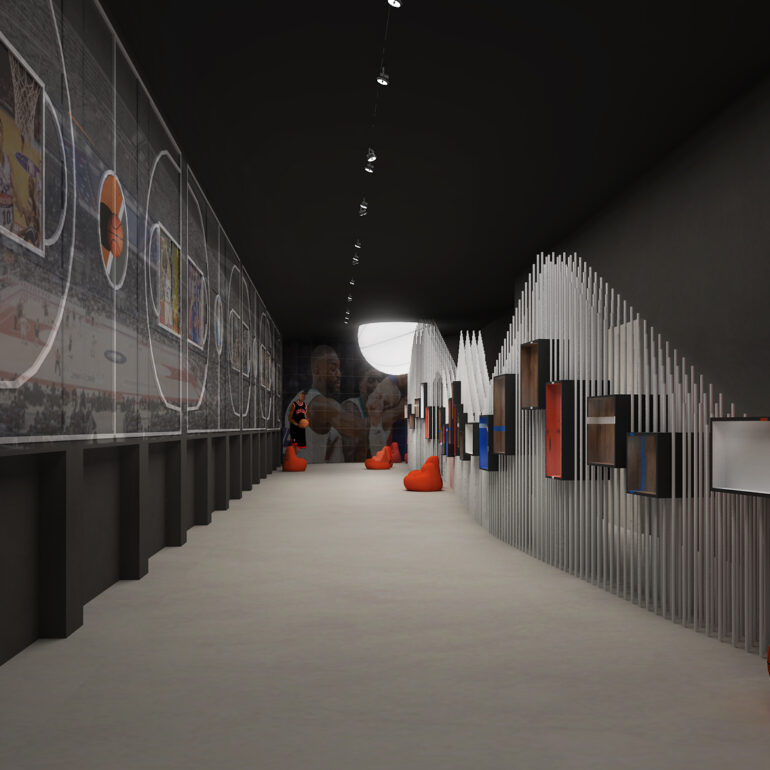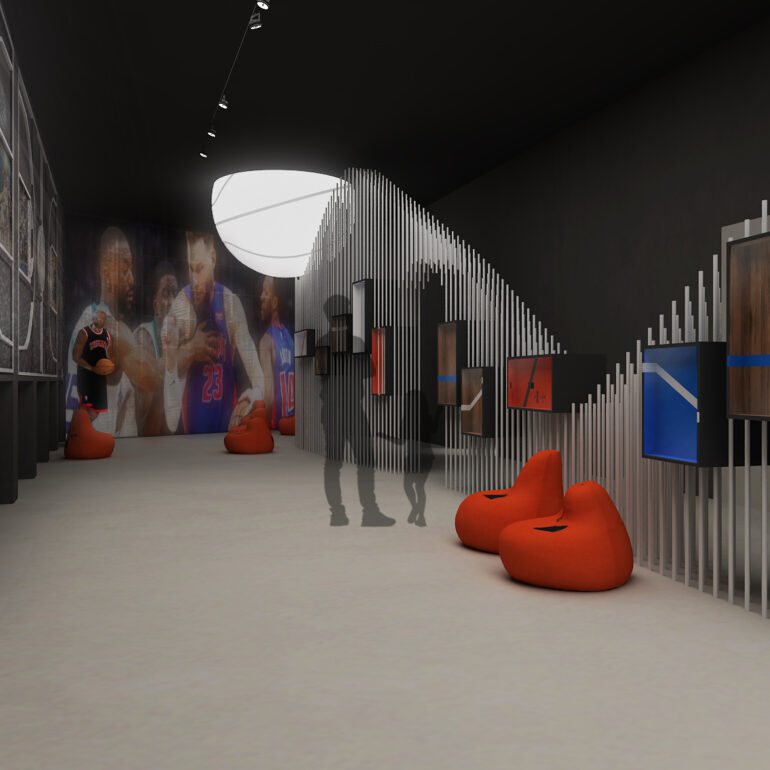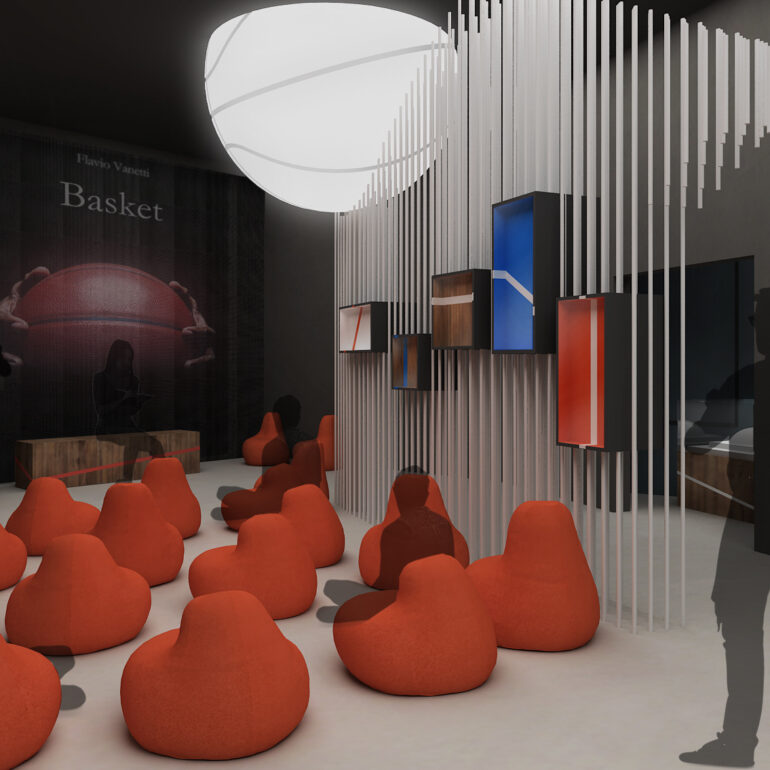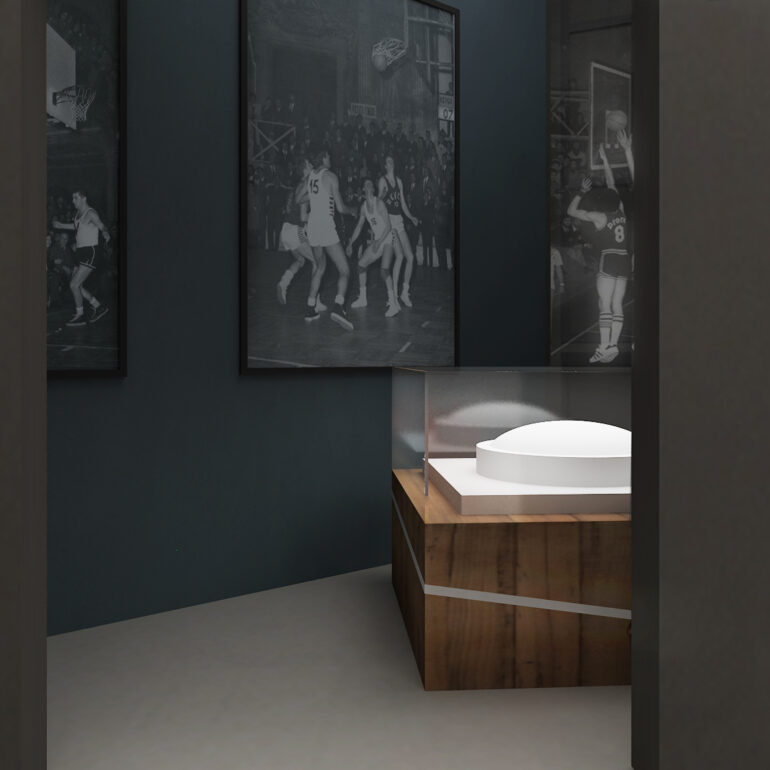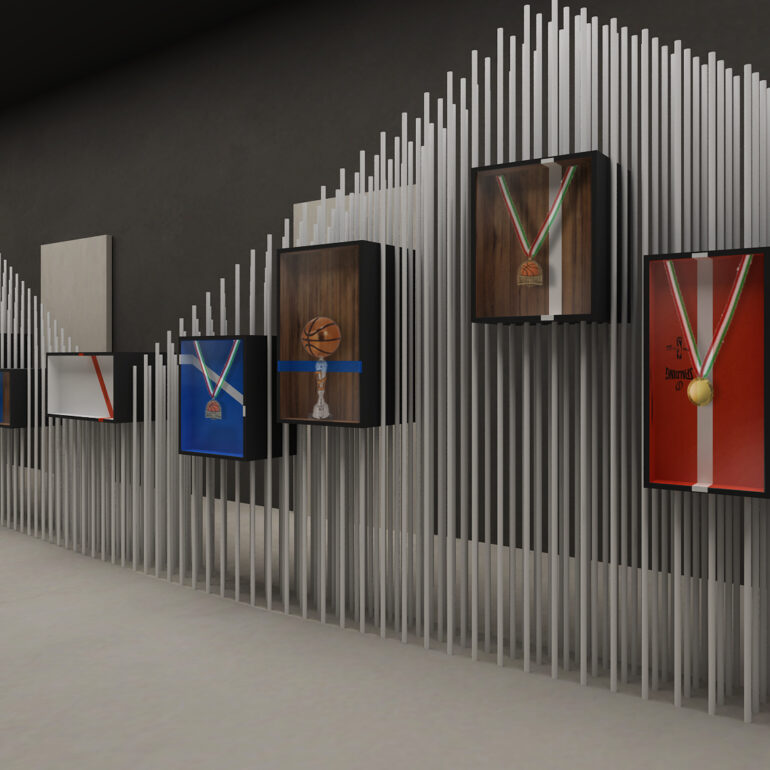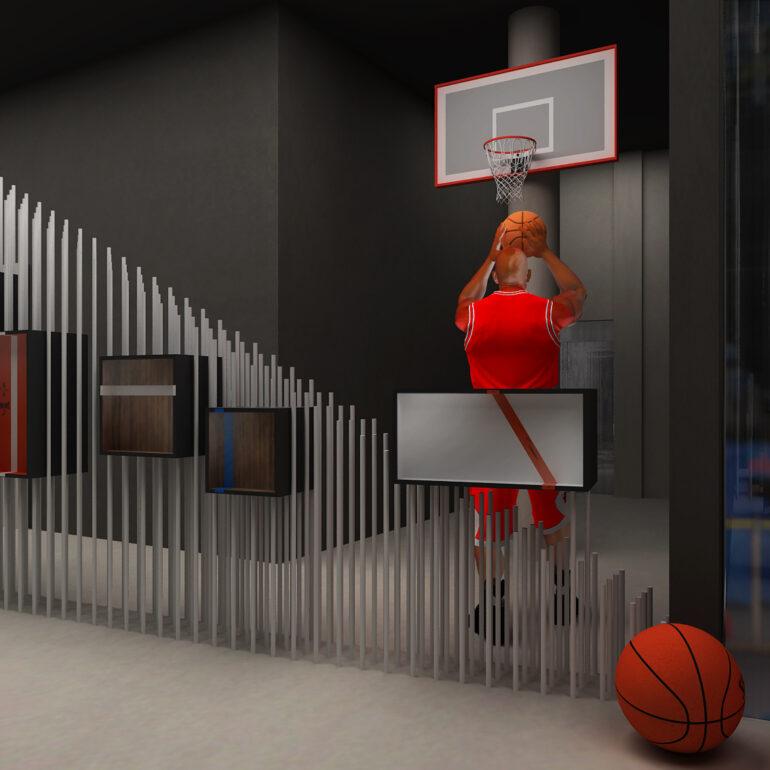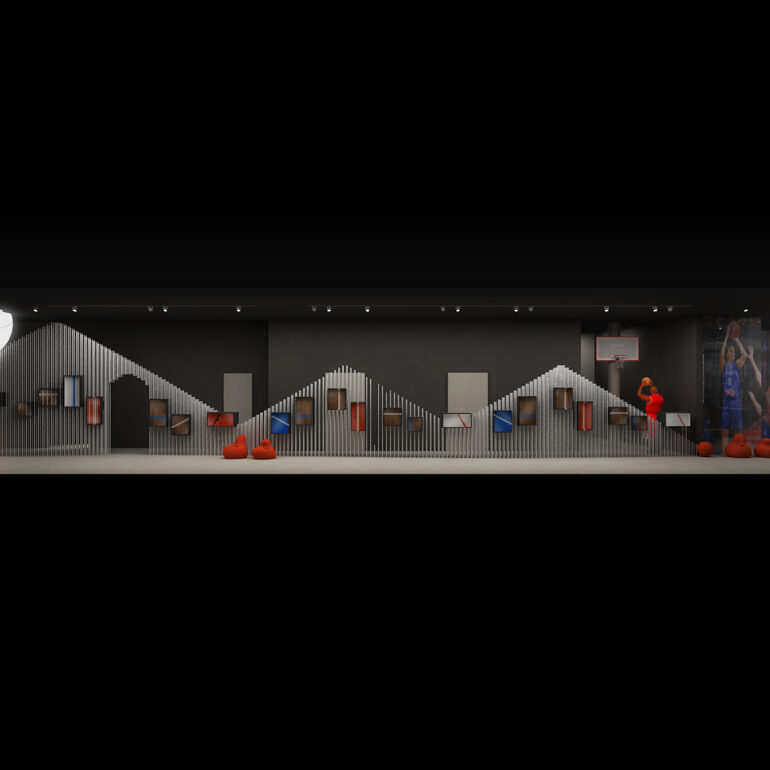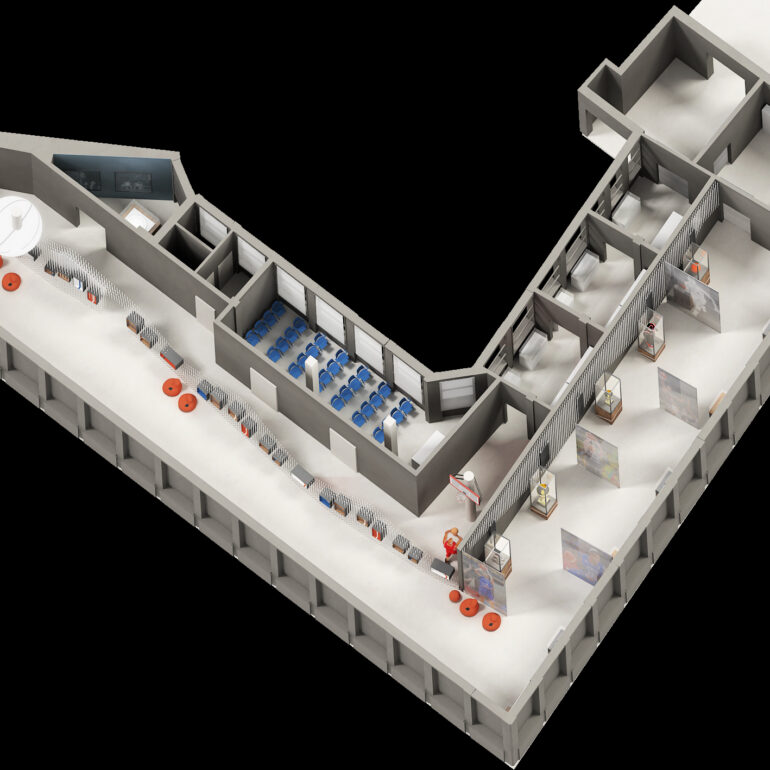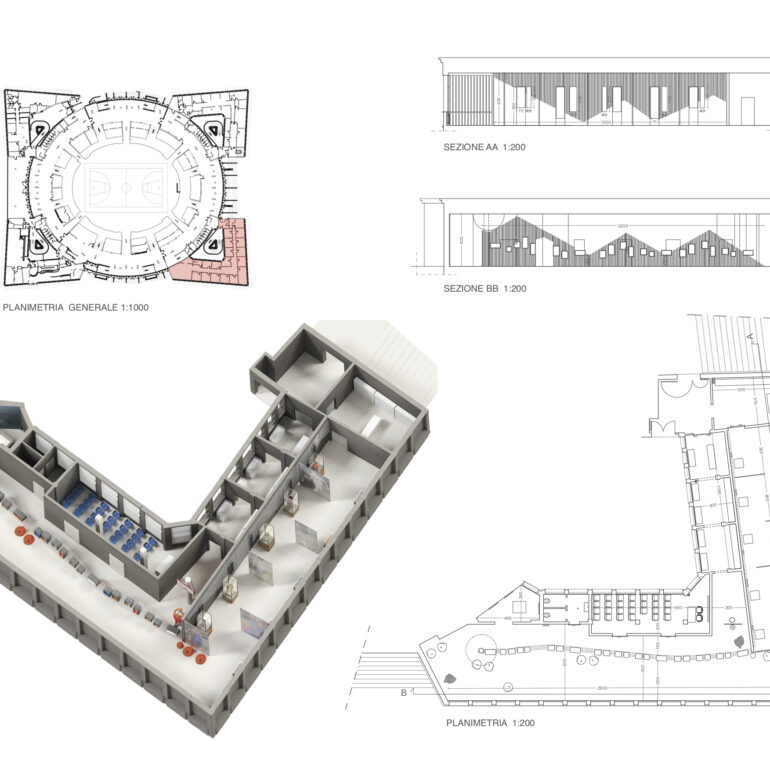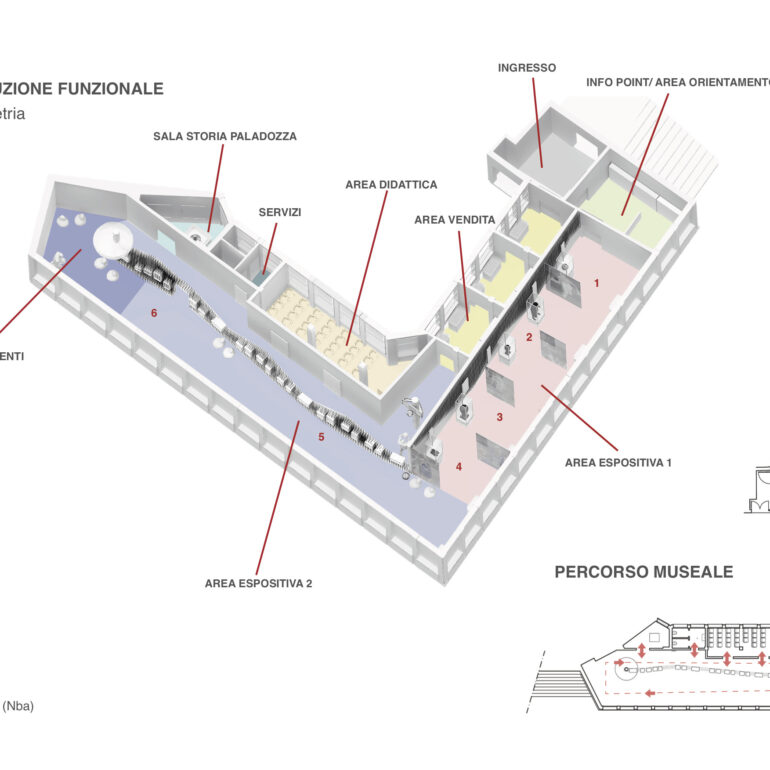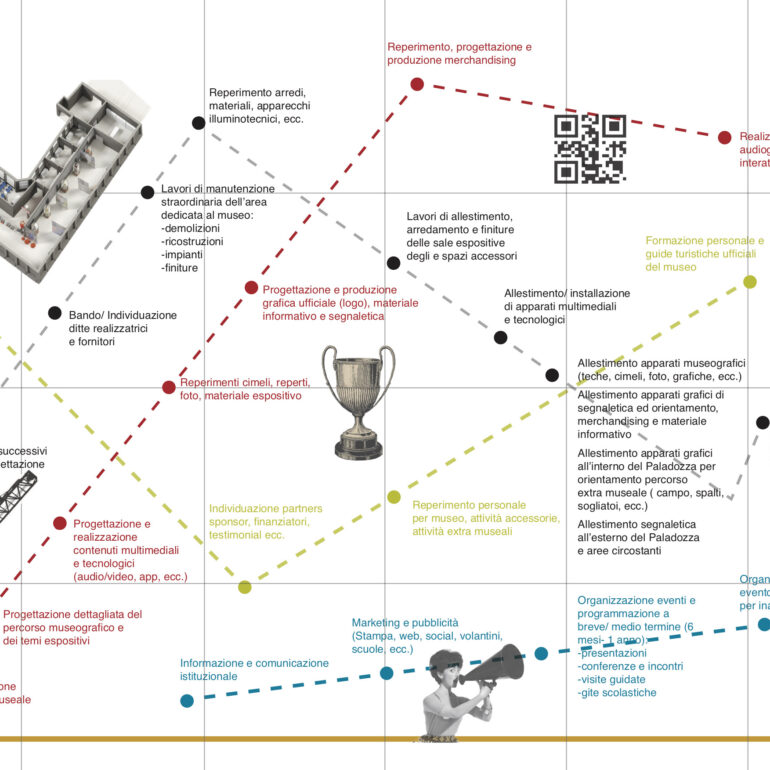




MUBA
Basket museum competition, 2019
Bologna, Italy
Concept
In basketball, there is a rule that we can consider overarching to all others: it is not possible to move or run while holding the ball stationary in hands. To move, one must dribble. Dribbling in basketball is a paradigm, a distinctive and emblematic gesture of the entire sport. Dribbling can become art and entertainment, and it can always be represented by a sinusoidal graph describing its development in space and time.
This graphic trend, a metaphor for the motion of dribbling, has been chosen as the archetype for the exhibition and narrative path of the new basketball museum. It is an element that defines the space, sets the rhythm throughout the museum’s path and evokes the movement of the player crossing the basket court amid the squeaks of rubber and the thuds of the ball on the parquet floor in the echoing arena. Every sport has its characteristic sound: dribbling is the sound of basketball.
Within the museum journey, an artistic installation of white tubes reproduces the ideal curve traced by the ball during dribbling, guiding the visitor through the succession of the exhibition until culminating in a luminous surprise: a large, oversized luminous basketball bounces out of the building and disappears beyond the ceiling of the room.
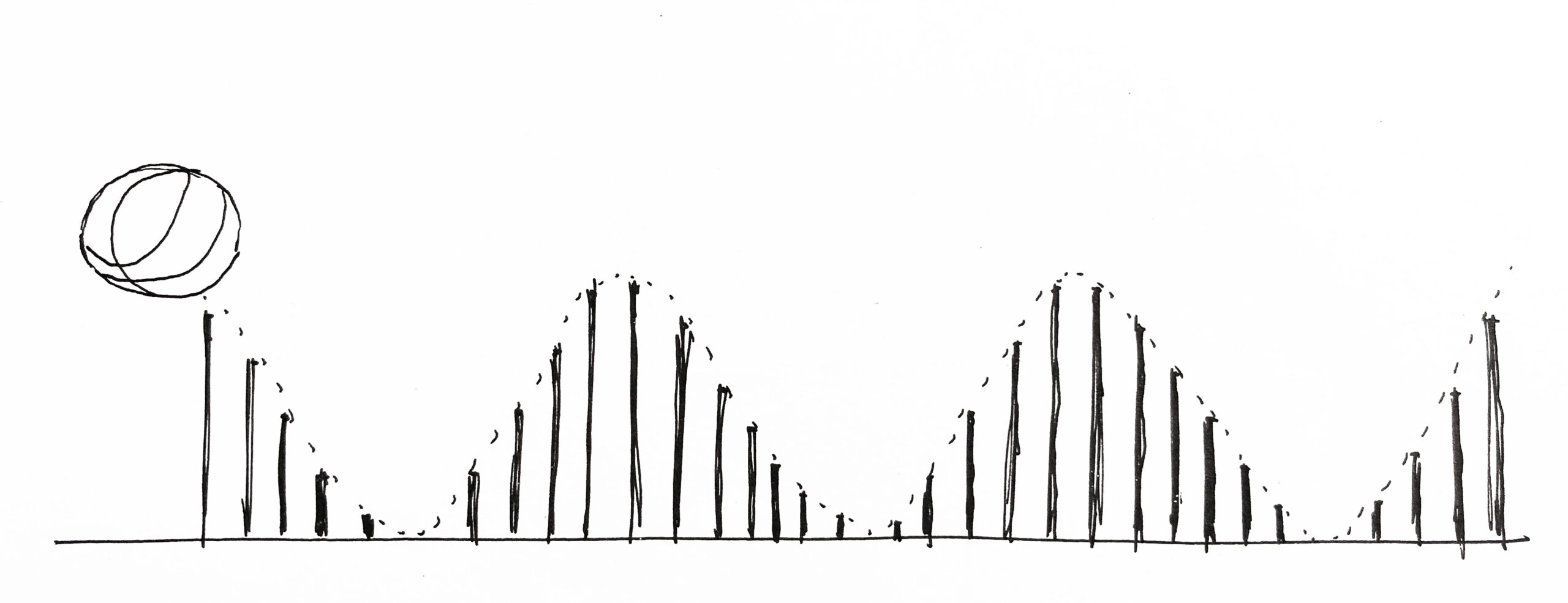
Museum design
The museum is housed in the northeast wing of PalaDozza and contributes to a broader redevelopment of the Sports Palace, aiming for a versatile and continuous use of the facility in line with a more contemporary interpretation of sports temple.
The museum unfolds along a circular path within the assigned area, offering visitors an engaging and multisensory experience in the world of basketball. The journey can extend beyond the museum area, allowing visitors to experience the thrill of walking on the basketball court and exploring the locker room of the local teams.
The project envisions a museum entrance serving as a connection point between the museum path and the main spaces of the arena. From the entrance area, visitors proceed to an orientation zone with ticketing and assistance, and then immerse themselves in the show. The exhibition spaces are designed within a large ‘L’-shaped open space, divided into two main areas, with thematic graphic panels guiding the experience.
Display cases, integrated with LED projections, showcase four main themes in the first part:
History of Basketball, Basket City, Italian National Team and Women’s Basketball. In the second part, two themes – Great Clubs and Foreign Champions – are explored in an open space with color-customized display cases representing basketball courts and video-mapping on the walls. The climax of the exhibition hall is represented by a versatile and reconfigurable space which can fit to different occasions: a flexible area within the museum which can be arranged for presentations, conferences, or film screenings using a large LED screen and lightweight, movable furniture.
The internal spaces are strategically designed to accommodate various needs, including a dedicated area for historical displays about PalaDozza, services, and a small educational room suitable for school groups or small conferences.
The environment concludes with a dedicated area for special events and a filter zone featuring a real basketball hoop, where casual champions demonstrate free throws. The museum path leads to the museum shop, offering visitors a final thrill before leaving the exhibition area.
Through an exit door, visitors can head towards PalaDozza for further exploration such as the court, stands, locker rooms, and general facilities with a bar/restaurant.
Architectural design and realization
The building known as PalaDozza was constructed in 1956 based on the design by Francesco Allegra and is part of a broader redevelopment of the Sports Palace. This redevelopment aims for a versatile and continuous use of the structure, reflecting a more contemporary interpretation of a sports temple.
The project involves the demolition of partition walls along the facades, creating an open space. The existing offices layout along the internal sides will be retained, transformed with the opening and closing of access points, without altering the structure layout. It will be necessary to relocate and modify the existing systems due to demolitions and to meet the requirements of the new layout.
To achieve a controlled brightness environment, walls, ceilings, glass, and all elements, including pipelines and installations, will be painted in a dark color to blend into the background. Illuminative fixtures will be ceiling-mounted using a track system, ensuring maximum versatility and the ability to modify and/or add individual lights as needed. The windows will be operable and accessible for any needs or maintenance, but they will be darkened using films and will serve as a backdrop for video projections.

